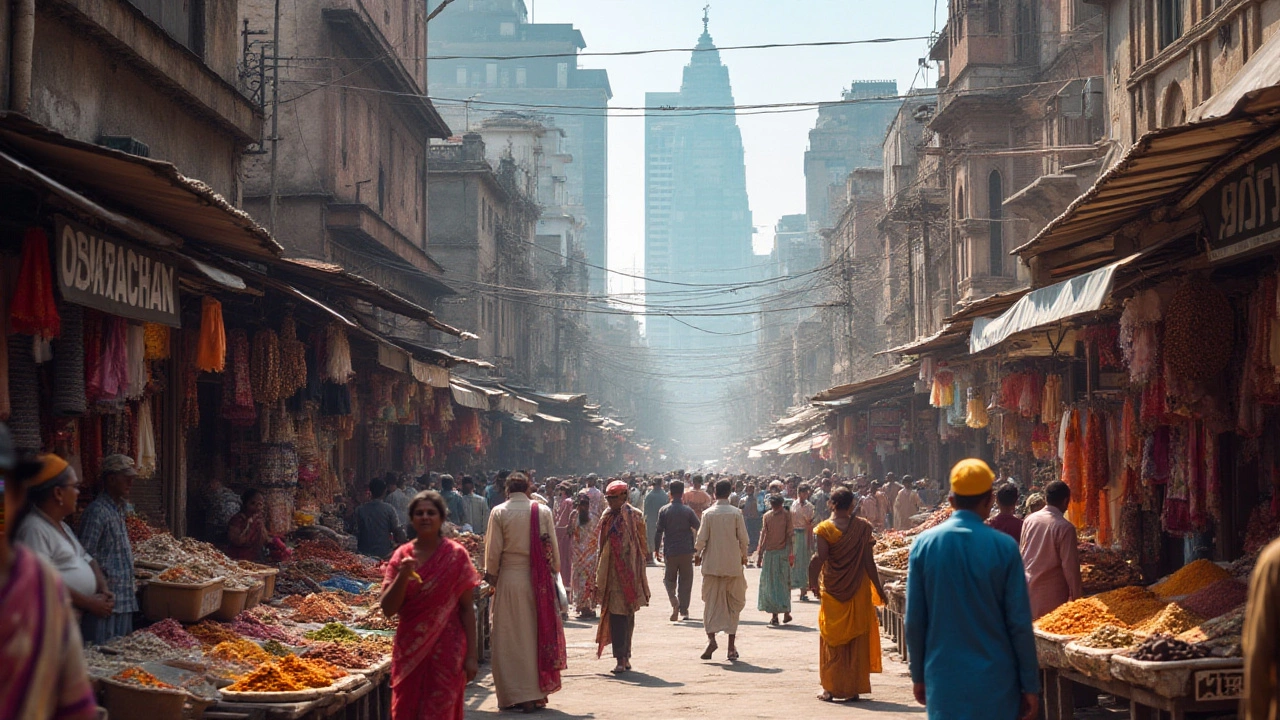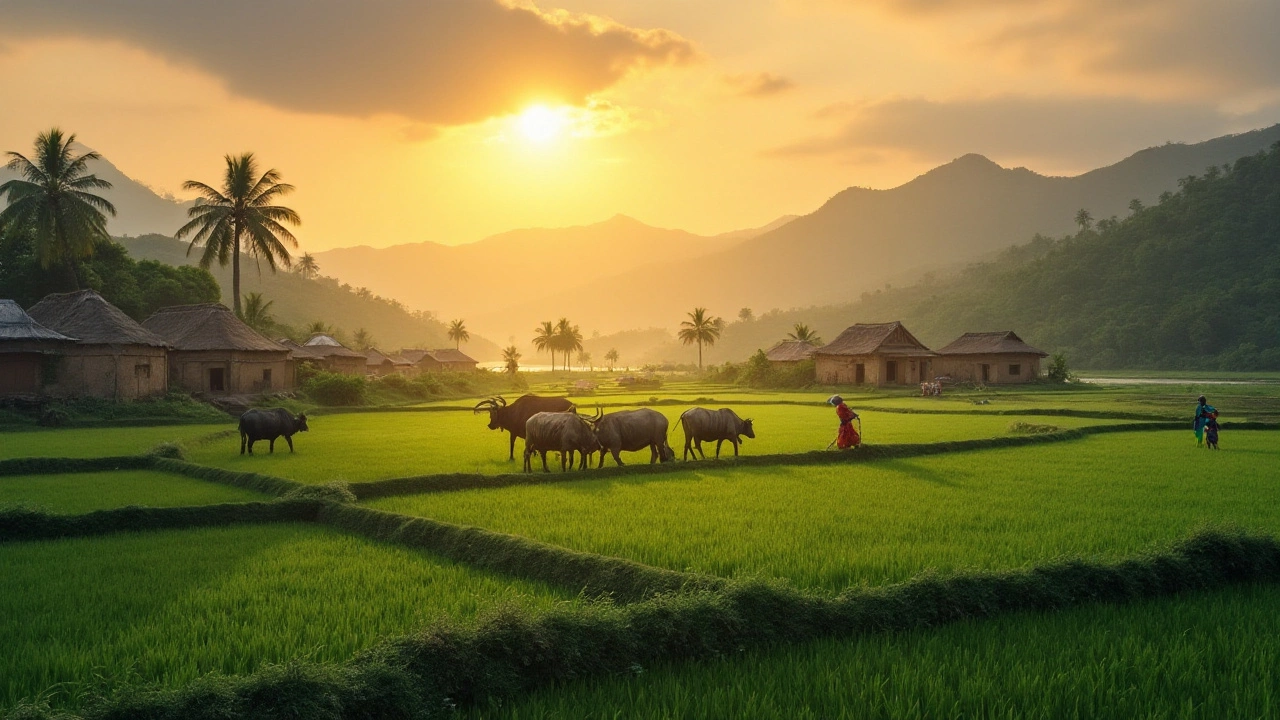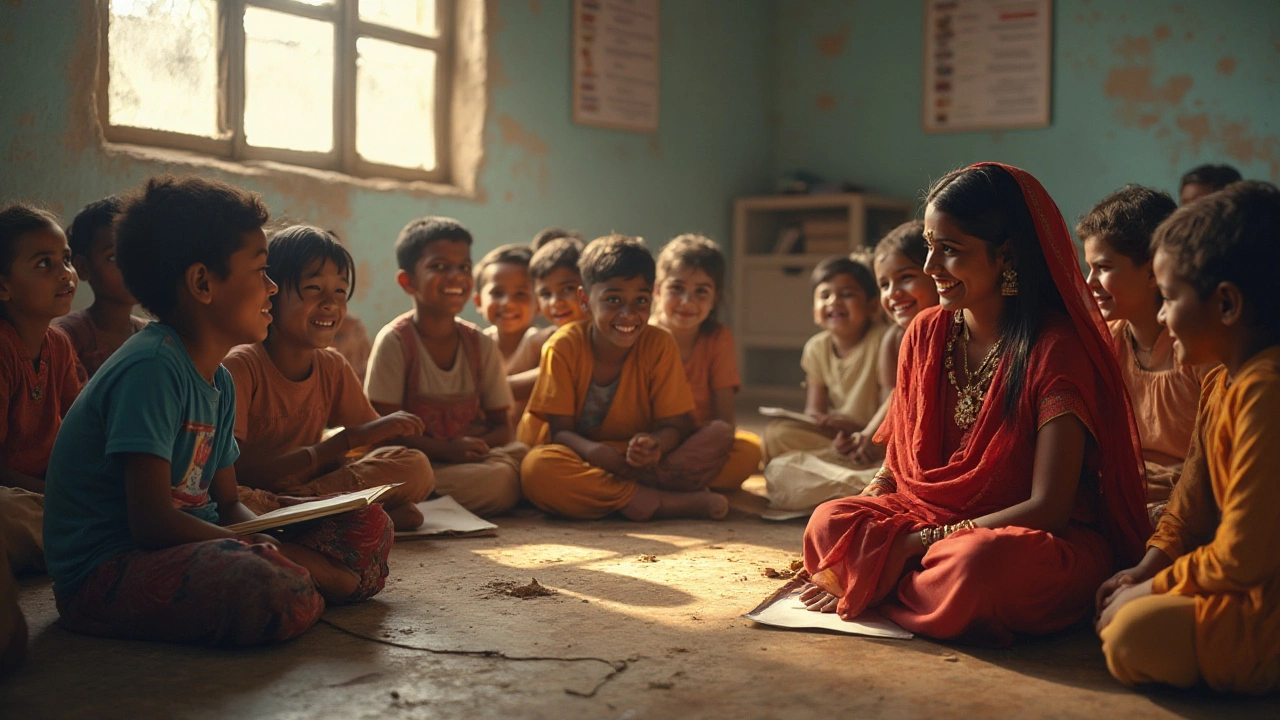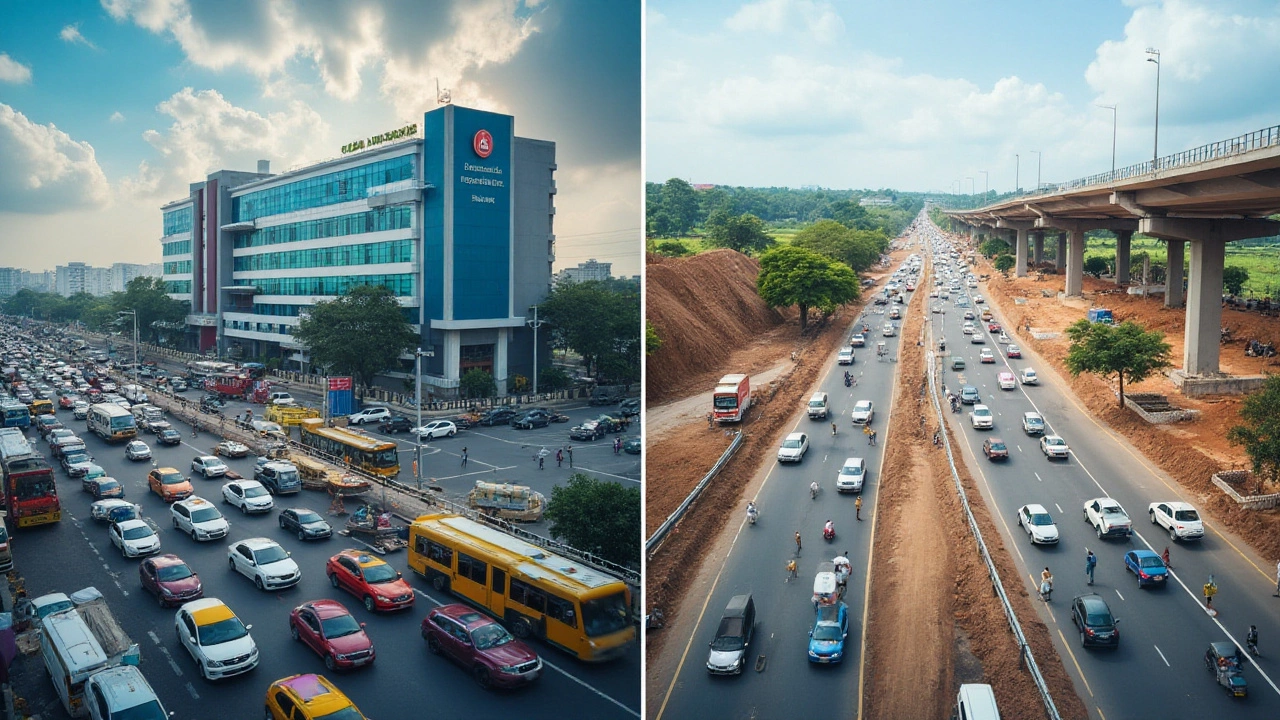Exploring Quality of Life in India: Insights and Realities
 Jan, 9 2025
Jan, 9 2025
In the heart of bustling South Asia lies India, a nation as diverse as it is vast, offering a unique tapestry of life experiences. From its sprawling metropolitan cities like Mumbai and Delhi to its rural villages, the quality of life varies dramatically across this enormous landscape.
India's rapid economic growth in recent years has brought a flurry of opportunities, enhancing the livelihood of millions. However, the flipside is the persistent struggle with issues like income inequality, healthcare accessibility, and educational disparities, which paint a challenging picture for some.
Whether you are considering work, study, or a cultural exploration, understanding these nuances can provide a clearer picture of what living in India truly entails. This article dives into the realities faced by the everyday Indian, dissecting the factors that frame the quality of life in a country that's constantly evolving while holding tightly to its traditions.
- Economic Growth and Opportunities
- Healthcare and Education
- Urban vs Rural Living
- Cultural and Social Dynamics
Economic Growth and Opportunities
The past few decades have witnessed a monumental transformation in India’s economic landscape, turning it into one of the fastest-growing major economies in the world. Those tangled crowds in bustling cities reflect a society where entrepreneurship thrives alongside traditional industries. India’s GDP has consistently grown, supported by a service sector that has become a force to reckon with globally. The technology sector, specifically, has been a significant contributor, with cities like Bangalore becoming known as the country’s Silicon Valley, drawing talent and investments from around the world.
The rich diversity of India's economy also extends into agriculture, which employs a large portion of the population and is the lifeline of rural India. Despite challenges like unpredictable climatic conditions and limited access to technology for smallholder farmers, growth in agro-tech innovations is making a promising impact. Industrial sectors, too, play a constant role in the nation's economic tapestry, with industries such as automotive, pharmaceuticals, and steel continuing to flourish. The ‘Make in India’ initiative, launched in 2014, has bolstered this growth, drawing international attention and facilitating investments.
The International Monetary Fund has often noted, "India’s economic fundamentals remain strong with robust consumption and investment demand."The future seems promising, with significant investments in infrastructure underway, including roads, railways, airports, and smart cities, all geared towards boosting economic activity. Yet, stark challenges persist. Economic opportunities, predominantly concentrated in urban areas, highlight the divide with rural regions lacking adequate infrastructure and opportunities. Bridging this gap is essential for sustained growth and a more balanced economic development across the country.
Steps towards enhancing economic opportunities include greater investments in education and skill development, ensuring the workforce is better equipped for new-age industries. India's demographic dividend offers a competitive edge, but it requires strategic nurture to transform potential into productivity. Meanwhile, the emphasis on digital India is enabling the rise of tech-savvy startups in cities beyond traditional technology hubs, nurturing innovation at a grassroots level.
In addressing these challenges, the role of policy reforms cannot be understated, as they lay the groundwork for sustainable economic growth. Enhancing ease of doing business, legislating labor reforms, and paving the way for foreign investments are crucial in sculpting an economically vibrant India. The integration of technology in financial services, through initiatives like Unified Payments Interface (UPI), has broadened financial inclusion, a testimony to how digital growth can seamlessly become a vehicle for development. India’s economic stage is set for an interesting play, blending tradition and innovation, opportunity and challenge.

Healthcare and Education
India's progress in both healthcare and education reflects a nation striving to balance its immense potential with profound challenges. The country houses a mix of state-of-the-art medical facilities and educational institutions that attract attention globally, yet it also grapples with fundamental access issues that affect a significant portion of its populous. For instance, many urban areas boast world-class hospitals and specialty healthcare centers, emphasizing advanced medical technology and skilled professionals. In contrast, rural sectors often face a shortage of doctors and lack proper medical infrastructure, creating inequities within the system.
The government's initiatives, like the Ayushman Bharat scheme, aim to bridge these gaps by providing health coverage to millions, making strides toward universal health care. Though heralded as one of the world's largest public health insurance schemes, its implementation is not without complexities. Challenges include ensuring equitable service delivery in remote parts where a significant portion of the population resides. Despite these hurdles, life expectancy has improved, with increased awareness and intervention programs tackling previously rampant diseases.
Education in India is a critical driver for growth, with the nation's demographic dividend underscoring its priority. Prestigious institutions like the Indian Institutes of Technology (IITs) and Indian Institutes of Management (IIMs) nurture a workforce that's sought after globally. Yet, at the grassroots, the educational framework hasn’t transformed fast enough in some regions. Public schools in remote areas often face teacher shortages and inadequate resources, affecting student outcomes.
The Right to Education Act positions education as a fundamental right for every child up to 14 years, showcasing a legislative commitment to educational accessibility. However, disparities exist between government and private schooling in terms of quality and infrastructure, revealing the dual challenges of inclusivity and excellence. Recent reforms target curriculum modernization and skill-based learning, aiming to better equip students for contemporary employment markets. Moreover, the pandemic's exigencies spurred innovations like digital learning, pushing institutions to adapt rapidly.
“India has the potential to become a global education hub. Our challenge is twofold: quantitative expansion to accommodate all and qualitative enhancement to match global standards,” remarks Dr. Ranjit Sen, an education policy expert.
While initiatives both in healthcare and education symbolize India's aspiration for harmonized socio-economic advancement, the real measure lies in navigating the complex mosaic of achievements and obstacles. This dynamic interplay between regions underlines the diverse quality of life experienced within its borders, showcasing both triumphs and aspirations in creating a more equitable society.

Urban vs Rural Living
In examining the fabric of life in India, one must inevitably delve into the contrasts between urban and rural settings. The urban landscapes, with their modern skyscrapers, buzzing streets, and tech parks, represent a beacon of growth and aspiration. Metropolises like Mumbai, Bengaluru, and Hyderabad are bustling hubs where the energy is palpable, driven by rapid economic advancements and an influx of global businesses. Here, the standard of living for some is markedly high, with access to world-class amenities such as multi-specialty hospitals, international schools, and advanced public transport systems. Yet, this sheen of glamour often overshadows urban challenges like overcrowding, pollution, and the high cost of living, which continue to be issues for many inhabitants.
In contrast, rural India presents a picture that, while rooted in simplicity, is both beautiful and challenging. Villages are reflective of India's rich cultural tapestry, where traditions have withstood the test of time. The pace here is noticeably slower, largely defined by seasons and agricultural cycles. Farming being the primary occupation means that rural economies are heavily reliant on agriculture, which is still subject to the whims of weather and market unpredictabilities. A strong sense of community and kinship often prevails, although essential services like healthcare and education are limited compared to urban counterparts. For some, this represents a lifestyle steeped in tranquility and tradition, yet it highlights the stark divide in accessibility and development within the nation.
Interestingly, as per a report by the National Sample Survey Office, the income gap between urban and rural areas has seen minor shrinkage, primarily due to better connectivity and increasing rural employment opportunities.
"While cities show India at its future best, it's the villages that hold its cultural essence," says renowned social scientist, Dr. Radhika Kapur. "For true progress, the bridging of these two worlds is crucial."However, life in rural areas still largely operates on a subsistence level. Government initiatives aim to bridge these gaps by enhancing rural infrastructure and education, yet implementation hurdles often slow progress.
The contrasting dynamics of urban and rural living in India paint a multifaceted picture that is fascinating and complex. In the narrative of development, both aspects are indispensable threads weaving through India's evolving story. Whether it's the hustle of city life or the serenity of the countryside, each setting has its allure and challenges, contributing uniquely to the quality of life in India.

Cultural and Social Dynamics
India's social fabric is a complex tapestry woven with myriad threads of cultural traditions, languages, and lifestyles that often vary dramatically from one region to another. At the core of Indian society lies a vibrant diversity, one of the most varied in the world, which shapes an ever-evolving landscape of human interaction and cultural exchange. This diversity is celebrated across states through an array of festivals, foods, and practices, each region contributing its unique flavor to the idea of India. The coexistence of ancient customs with modern aspirations is seen in urban areas where technological advancement meets traditional rites, creating a unique juxtaposition where history and innovation dance together. However, navigating these cultural complexities can be challenging, especially for first-time visitors or new residents.
With 22 officially recognized languages and numerous dialects, language itself becomes a fascinating aspect of cultural dynamics in India. In metropolitan cities like Mumbai and Bangalore, multiple languages might be used in a single conversation, reflecting the multilingual versatility of its people. Religion also plays a pivotal role in daily life, influencing everything from dietary habits to workweek schedules, celebrated through rituals and public holidays marking religious occasions throughout the year. This is a nation where Hinduism, Islam, Christianity, Sikhism, Buddhism, and Jainism, to name a few, converge, each adding depth and texture to the social landscape. Living conditions are often shaped by these cultural norms, affecting everything from social gatherings to business dealings, making cultural literacy a valuable asset for seamless integration.
Social hierarchies and family structures are also crucial facets of Indian society. Traditional values approximately align familial responsibilities with age-old customs, though modern societal trends do challenge these traditional roles. The joint family system, which once dominated, is gradually evolving under urban pressures and changing economic roles, giving birth to more nuclear family setups. Social dynamics in rural areas contrast with those in the cities, where the pace of life might be slower, yet the community bonds are stronger. In fact, Mahatma Gandhi once said,
"India's soul resides in its villages,"emphasizing the importance of rural life in Indian society.
While traditional arts like dance, music, and crafts flourish, they are incrementally intertwined with global cultural influences through cinema and digital media. The Bollywood film industry, for example, is a massive cultural export that not only entertains but also speaks to societal norms and aspirations, often sparking conversations around pressing social issues. Influences from western cultures are evident particularly amongst the younger generation, who embrace both traditional and global cultural elements, reflecting India's dynamic cultural evolution. Engaging with this aspect of Indian lifestyle offers an immersive experience, rich with nuances and ongoing dialogues. Understanding these cultural and social dynamics can immensely enrich the quality of life for anyone who embraces the vibrant ethos of India.